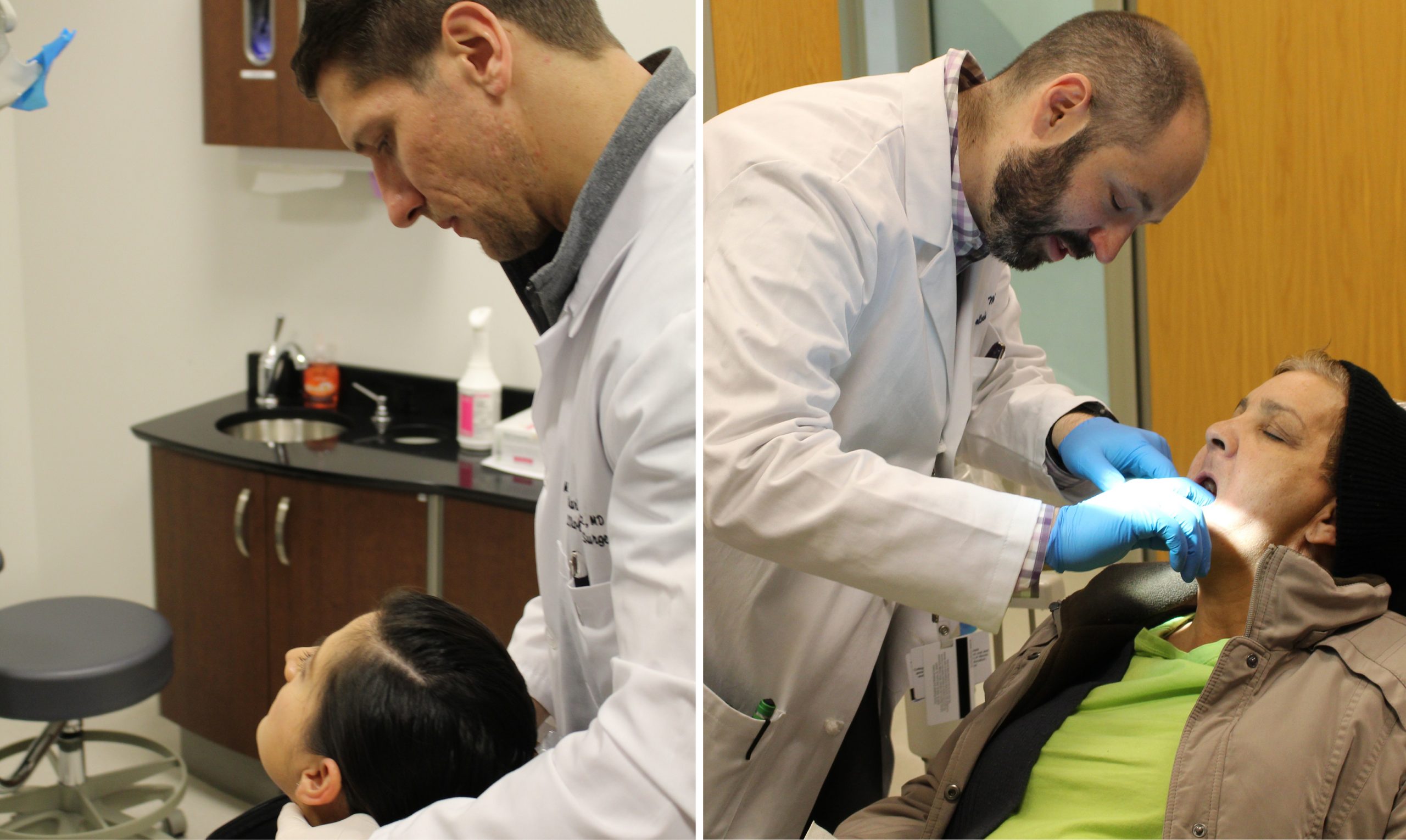
Petra Garcia walked into Mile Square Health Center last week to undergo a mammogram and walked out having been screened for head and neck cancer, too.
Garcia was one of 187 individuals to be screened at five University of Illinois Health locations – UI Health Mile Square sites in South Shore, Humboldt Place, Main and Back of the Yards, as well as the UIC College of Dentistry – last week as part of April’s Oral, Head and Neck Cancer Awareness Month. Of those individuals screened, 24 had positive results, meaning those patients require follow-up screening and care, said Nasima Mannan, MPH, senior research specialist and navigation manager at the UI Cancer Center.
Virginie Achim, MD, assistant professor of otolaryngology at the University of Illinois College of Medicine, helped to plan the screening event.
An estimated 65,410 people (48,000 men and 17,410 women) will develop head and neck cancer this year. While younger people can develop the disease, most people are older than 50 when they are diagnosed. The disease will cause an estimated 14,620 deaths (10,980 men and 3,640 women) this year.
Eighty five percent of head and neck cancers are linked to tobacco use – smoking cigarettes, cigars or pipes; chewing tobacco; and using snuff. Secondhand smoke may also increase a person’s risk of developing head and neck cancer. The second leading cause of head and neck cancer is frequent and heavy alcohol use.
The largest number of patients screened were at the UIC College of Dentistry. Dentists routinely examine the mouth and head and neck during any visit prior to providing any dental work, said Michael Markiewicz, DDS, MPH, MD, FACS, head and neck oncologic and microvascular reconstructive surgeon, UI Cancer Center member, and assistant professor of oral and maxillofacial surgery. This is important, since patients often visit their dentist more than their primary care physician.
During the screening process, health care professionals attempt to search for precancerous and cancerous findings of the head and neck. This includes, but is not limited to, lesions that may exhibit signs of being high risk for cancer, or possibly a lump in the neck.
The lesions may be white or red, and sometimes can be painful. Other symptoms of oral cancer may be numbness and the inability to feel certain areas of the mouth, lip, chin or face, he said. A patient may also find swallowing difficult, and the site of a tooth extraction may not heal properly, which can be suspicious for cancer.
“A new lump in the neck should always be evaluated,” said Nicholas Callahan, MPH, DMD, MD, a head and neck oncologic and microvascular reconstructive surgeon, UI Cancer Center member, assistant professor of oral and maxillofacial surgery, and partner with Markiewicz in the College of Dentistry practice. “It is so important to be vigilant so that if a patient does develop cancer, we can catch it early. Early diagnosis is a significant factor in survival in head and neck cancer.”
